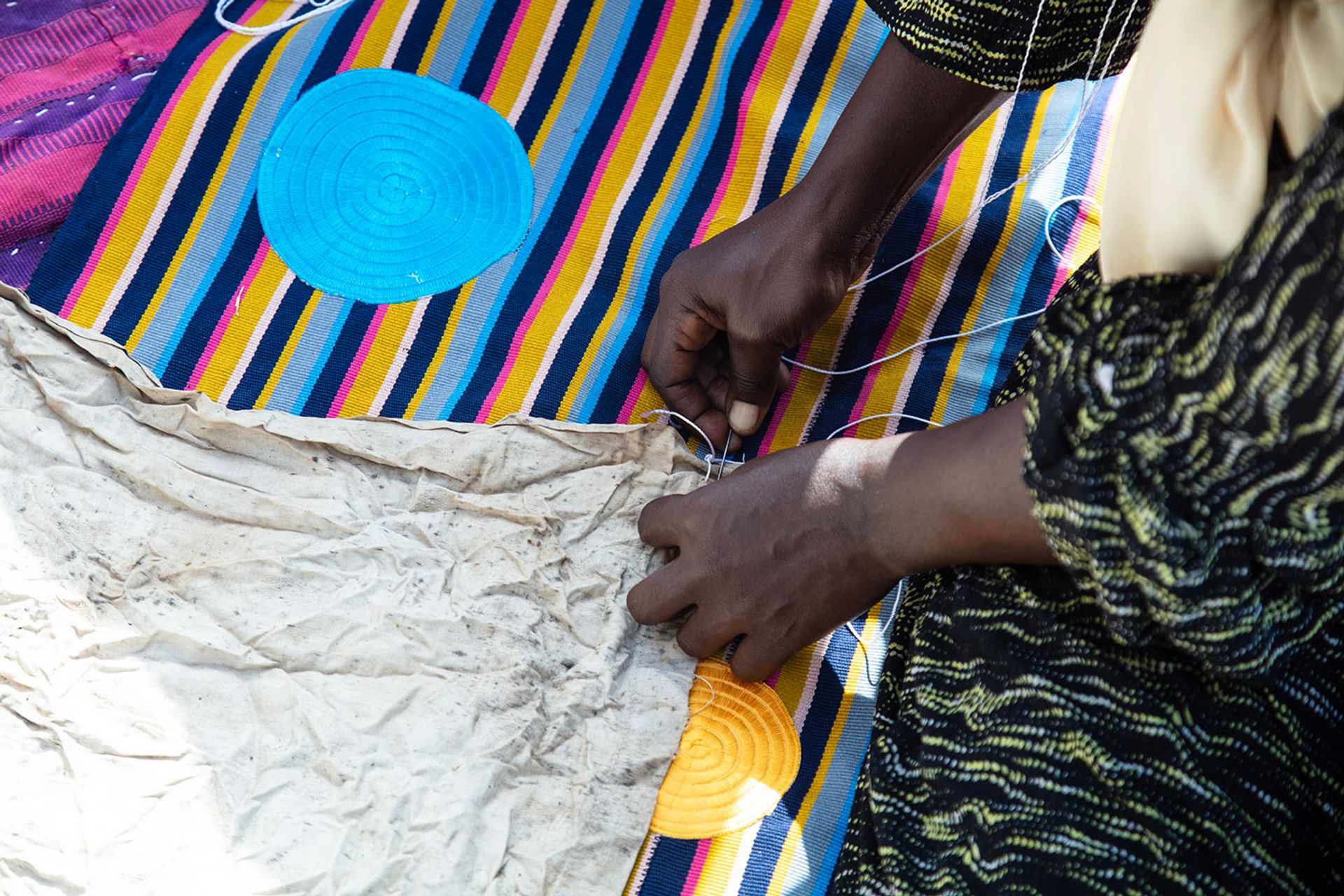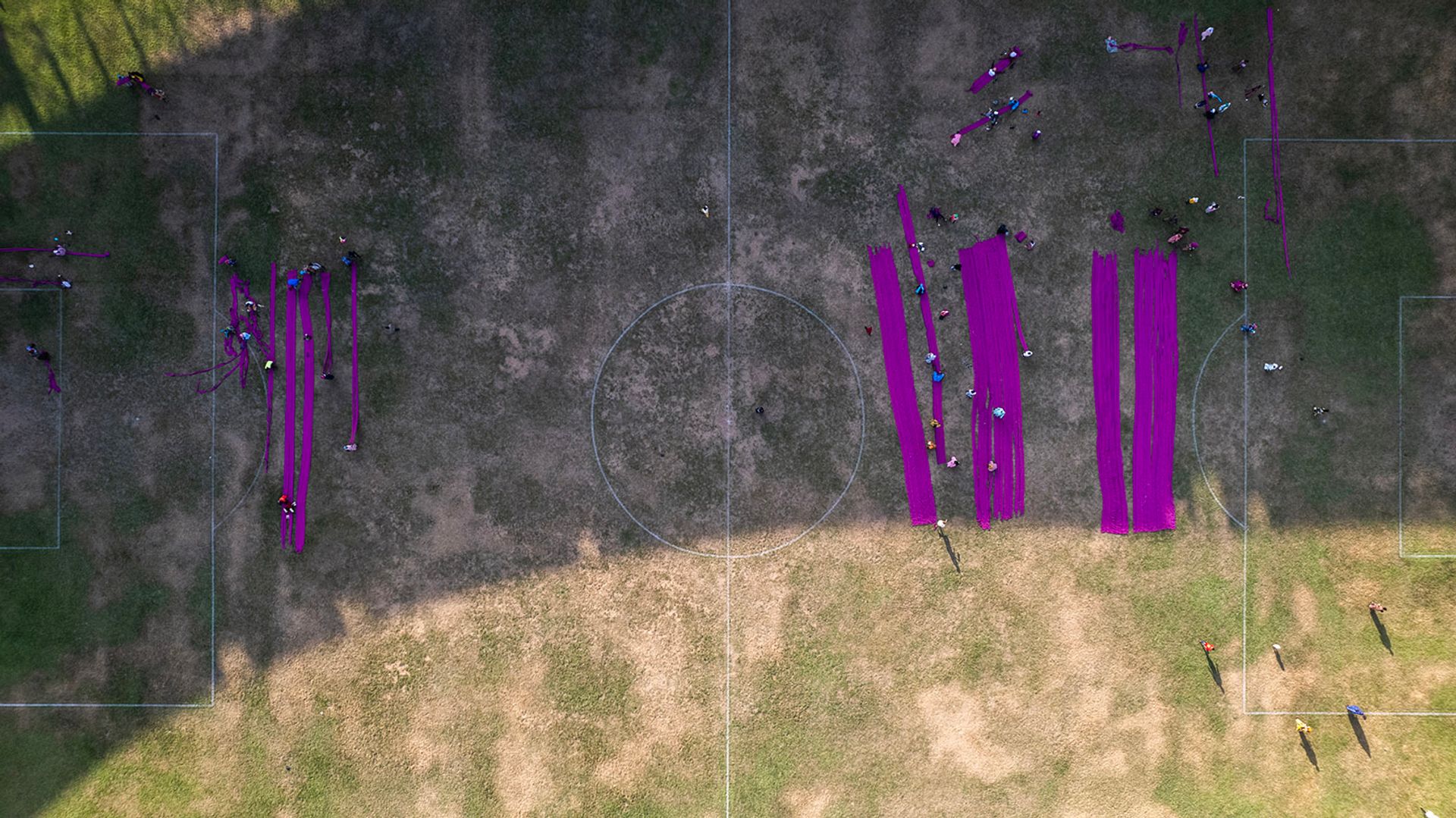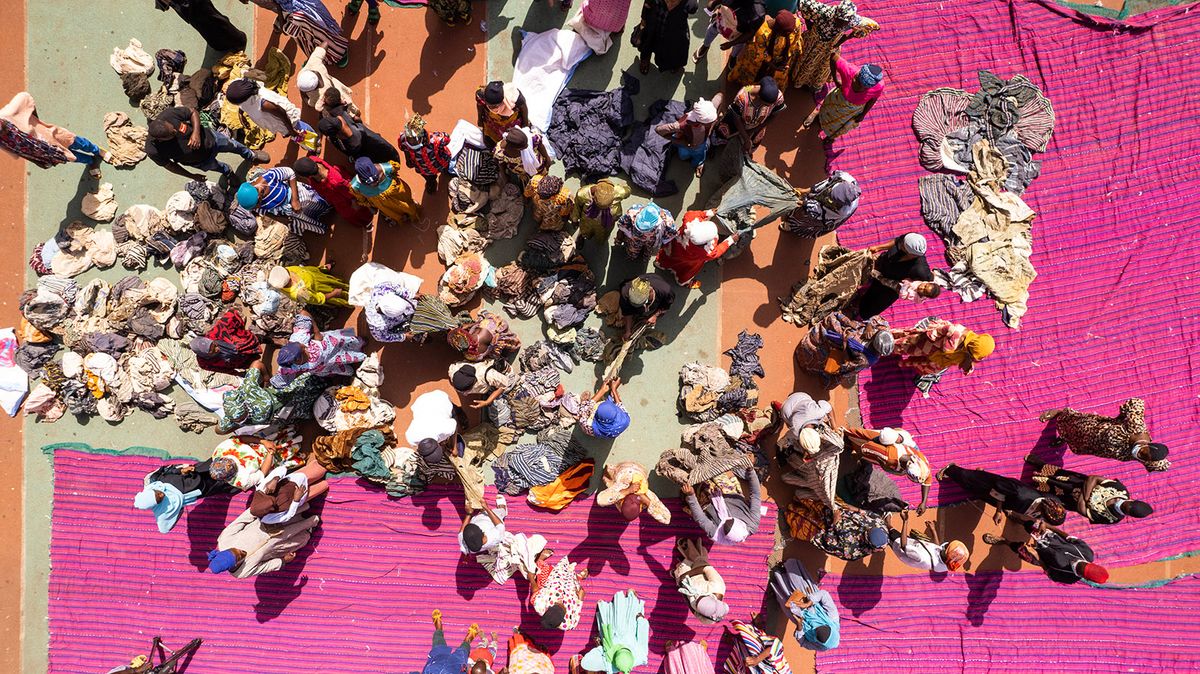The Barbican Centre’s brutalist façade will get a new look this spring as Ghanaian artist Ibrahim Mahama unveils his first large-scale UK commission. Purple Hibiscus (2023-24) will see the art complex’s Lakeside Terrace wrapped in 2,000 sq. m of bespoke pink and purple cloth. The work, part of the Barbican's upcoming exhibition Unravel: The Power & Politics of Textiles in Art, has been handwoven in collaboration with “hundreds of craftspeople” from Tamale in northern Ghana, a statement from the Barbican says.
The cloth will be embroidered with traditional “batakaris”—a traditional Ghanian men’s garment which originated in the north of the country—which the artist collected from numerous communities across the region in what an exhibition statement describes as an “exchange and barter” process.
“Worn, degraded and bearing traces of years of use, these smocks are testaments to the endurance of traditional belief systems, and the continued relevance of intergenerational knowledge,” the statement continues. It added that they are testament to “Mahama’s deep interest in the life cycles of textiles and what can be learnt from the historical memories embedded within them.”

The cloth is embroidered with batakaris—a tradition Ghanaian smock which originated in Northern Ghana
Courtesy Ibrahim Mahama, Red ClayTamale, Barbican Centre, London and White Cube
The Barbican's location gives the work special relevance. The organisation's statement notes that its complex stands on the former Cripplegate parish, which by the Second World War had become “a centre for the ‘rag trade’” in the UK. “The area was sought out for the buying, selling and production of cloth,” the statement says. “Viewed together, the hand-stitched panels of Purple Hibiscus and the hand-pitted concrete of the Barbican’s rough concrete façade offer an expanded reflection on the power and significance of collective labour.”
The work also references the 2003 novel of the same name by Nigerian author Chimamanda Ngozi Adichie. In Adichie's book, the purple hibiscus symbolises freedom and hope for the oppressed characters. “I chose the book to inspire the colour of the work and the patterns of the smocks.” Mahama tells The Art Newspaper.

Aliu Mahama Sports stadium in Tamale gave the artist and his collaborators the space to work on the large scale piece
Courtesy Ibrahim Mahama, Red Clay Tamale, Barbican Centre, London and White Cube
Such was the scale of his piece, Mahama had to use the “Aliu Mahama Sports stadium in Tamale as the primary studio space”, the artist said in statement. Mahama, who has no family ties to the stadium, adds: "The scale of the material forms needed some level of freedom, which the space gifted.”
Unravel: The Power & Politics of Textiles in Art, Barbican Art Gallery, London, 13 February-26 May. Purple Hibiscus will be on show from 10 April to 18 August 2024.


